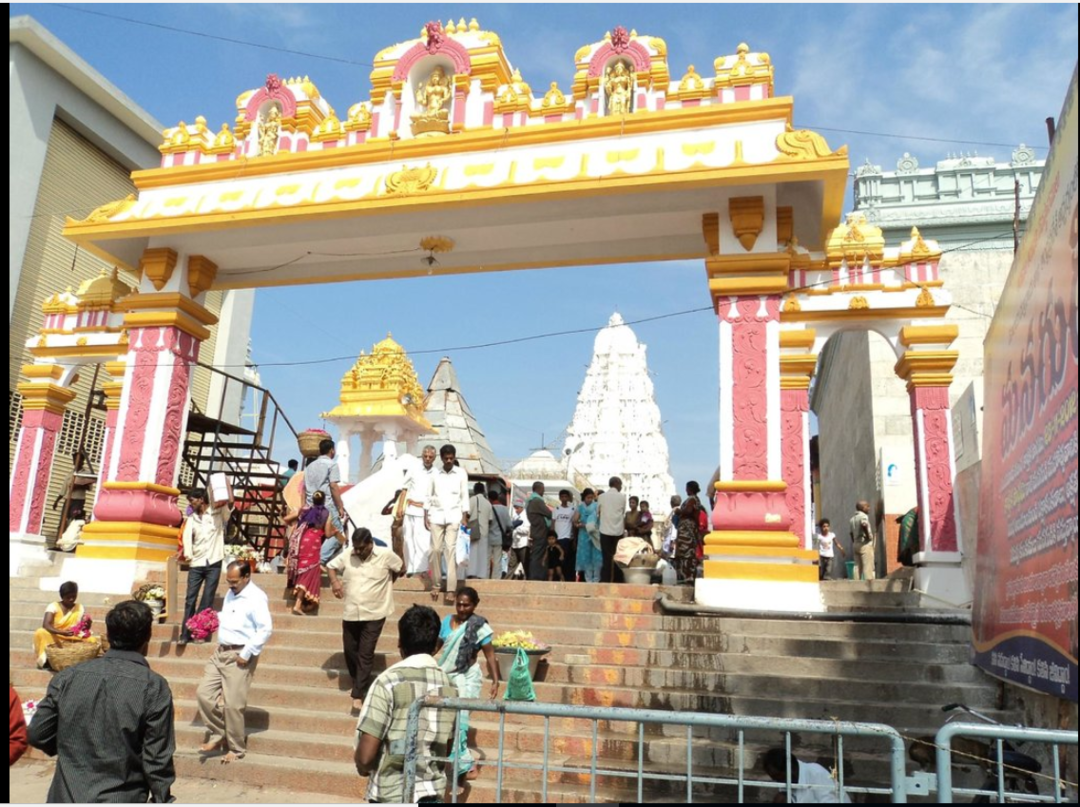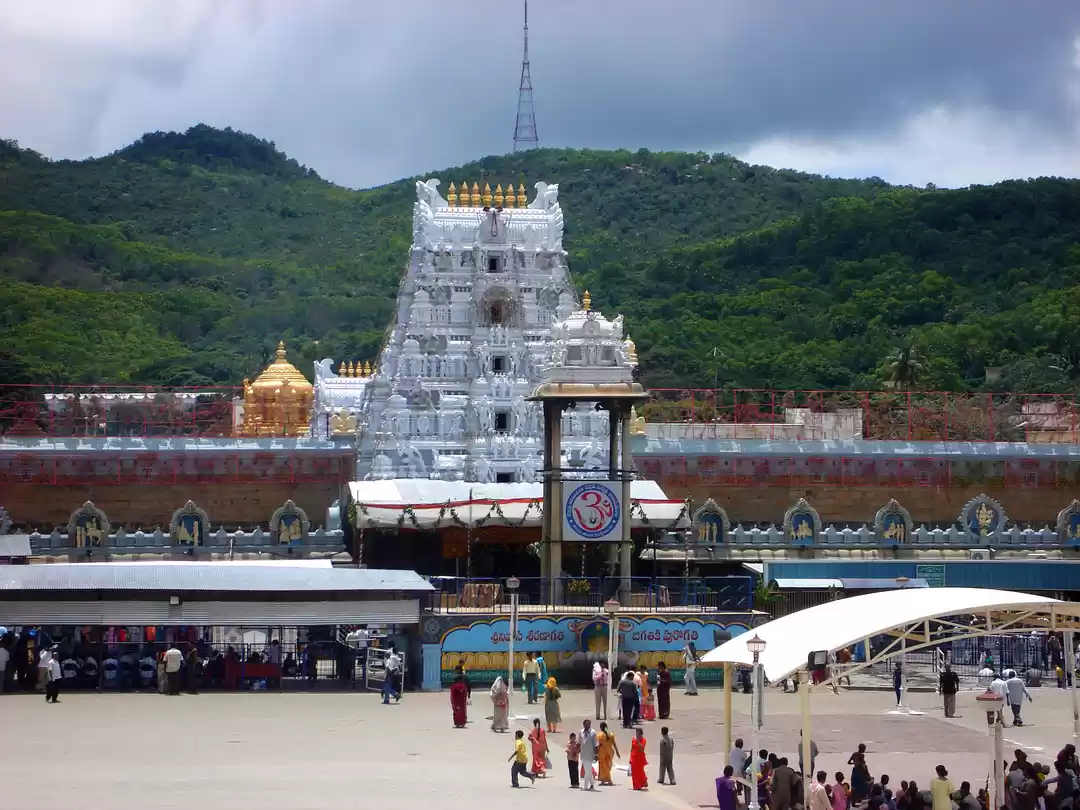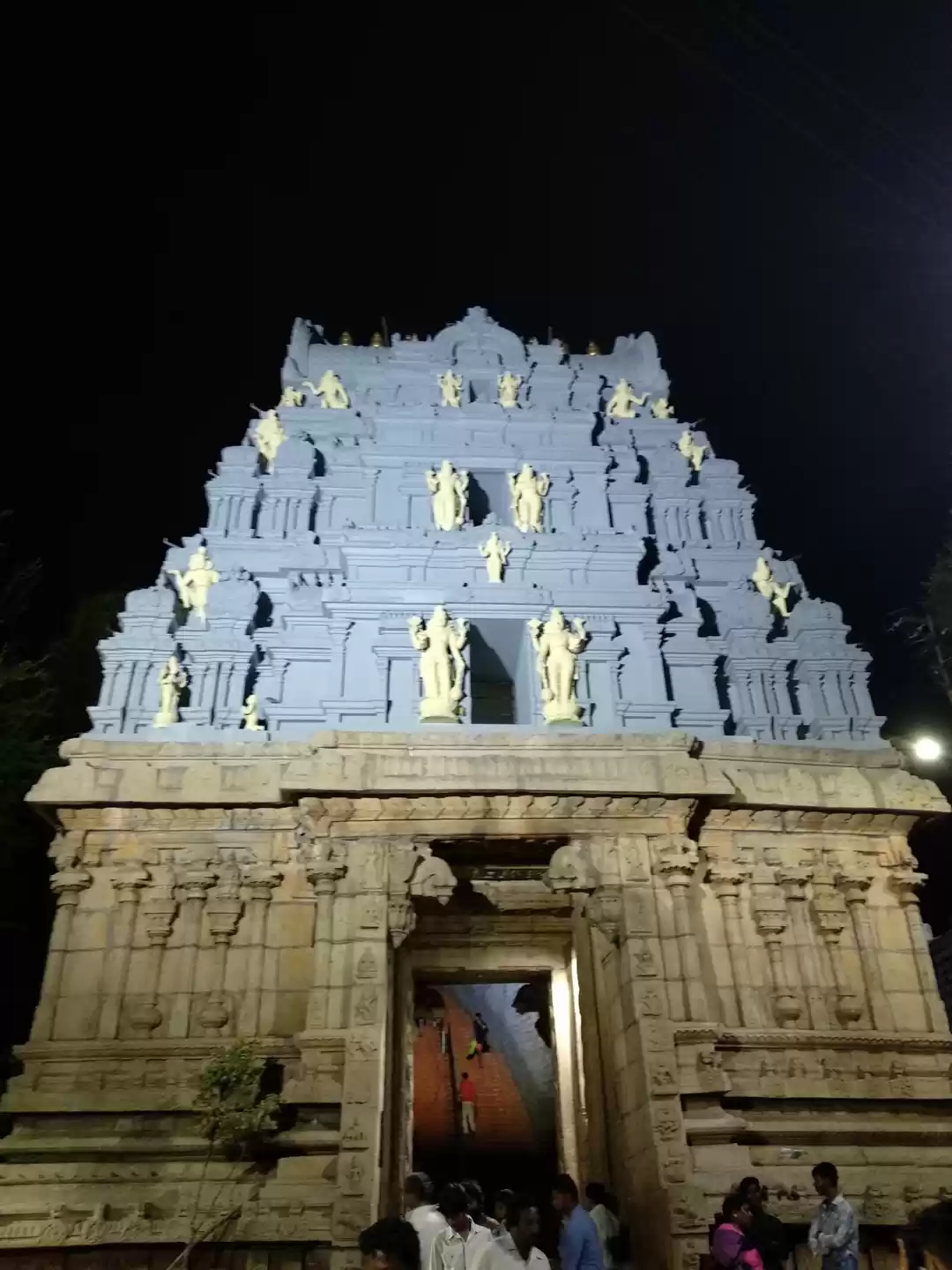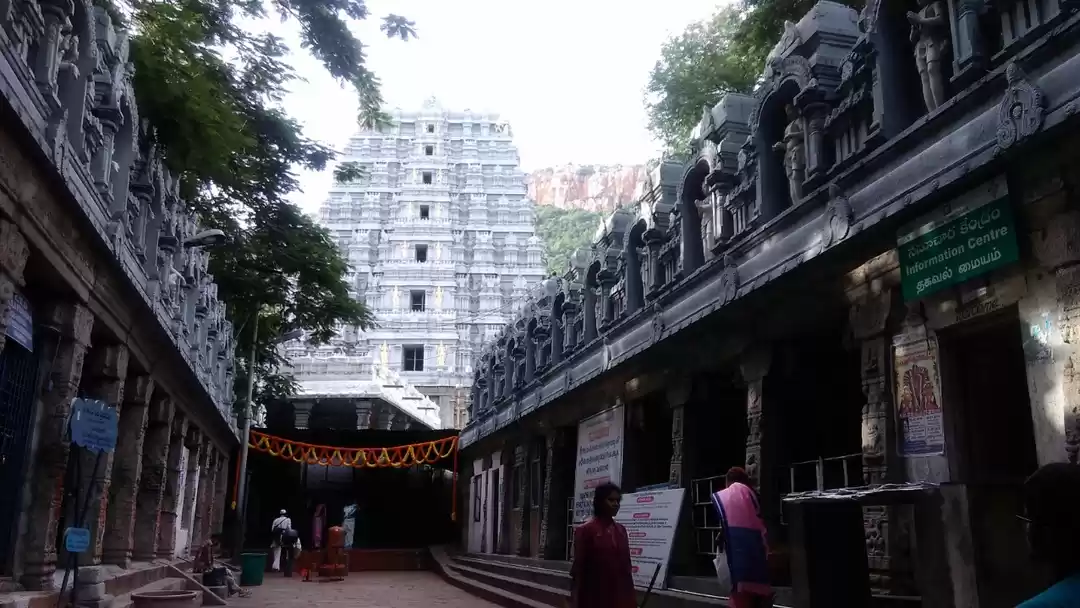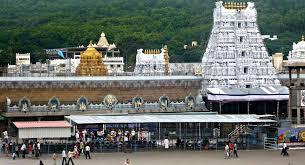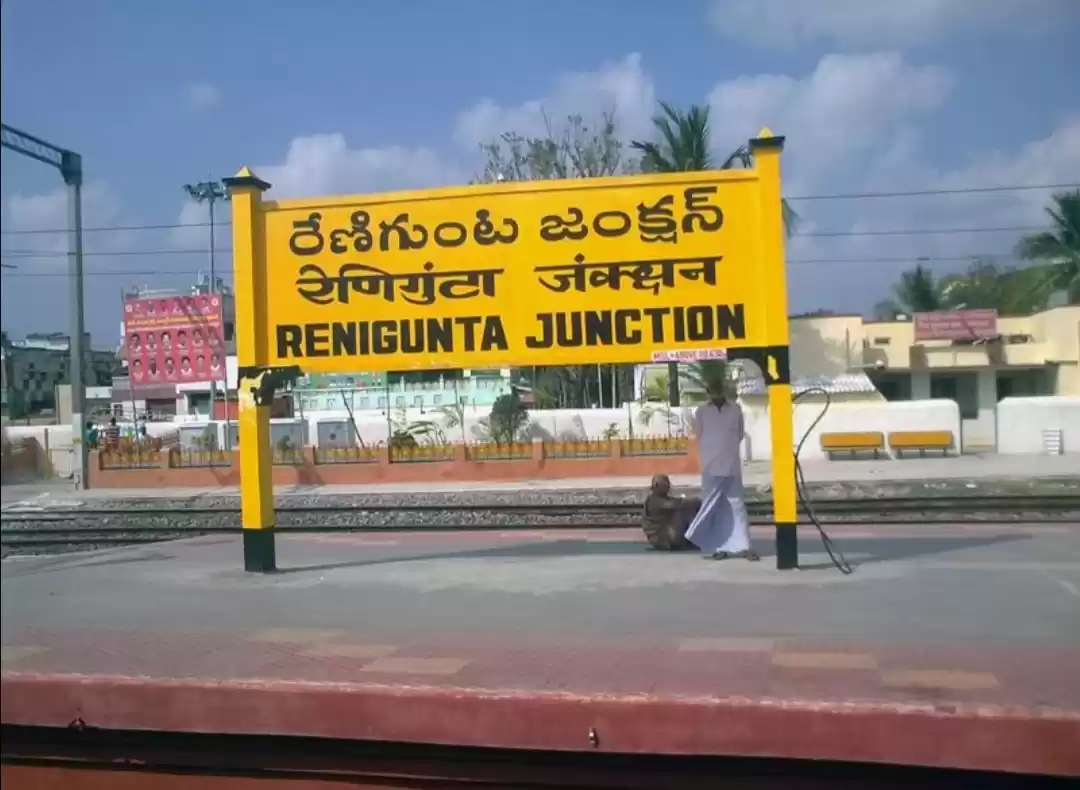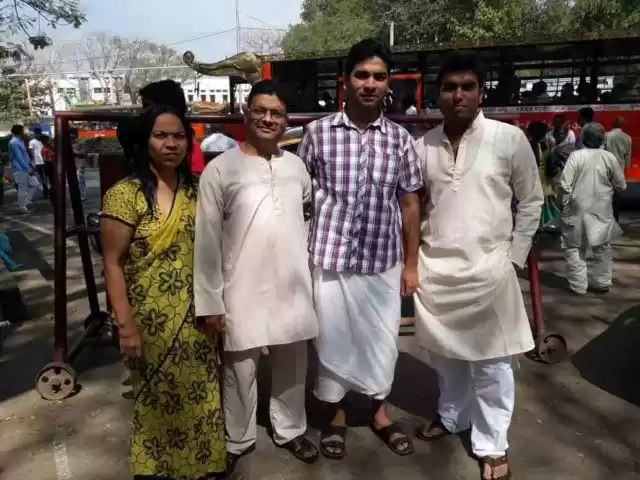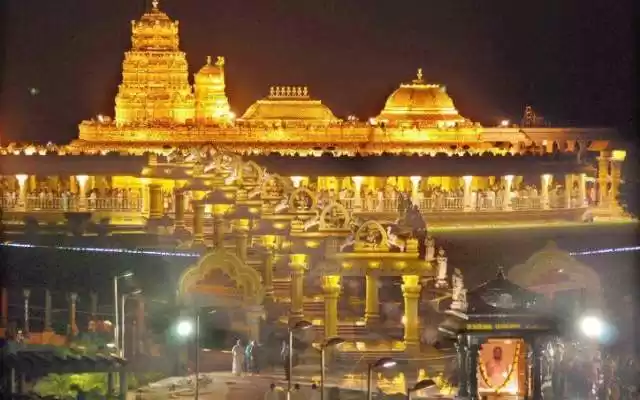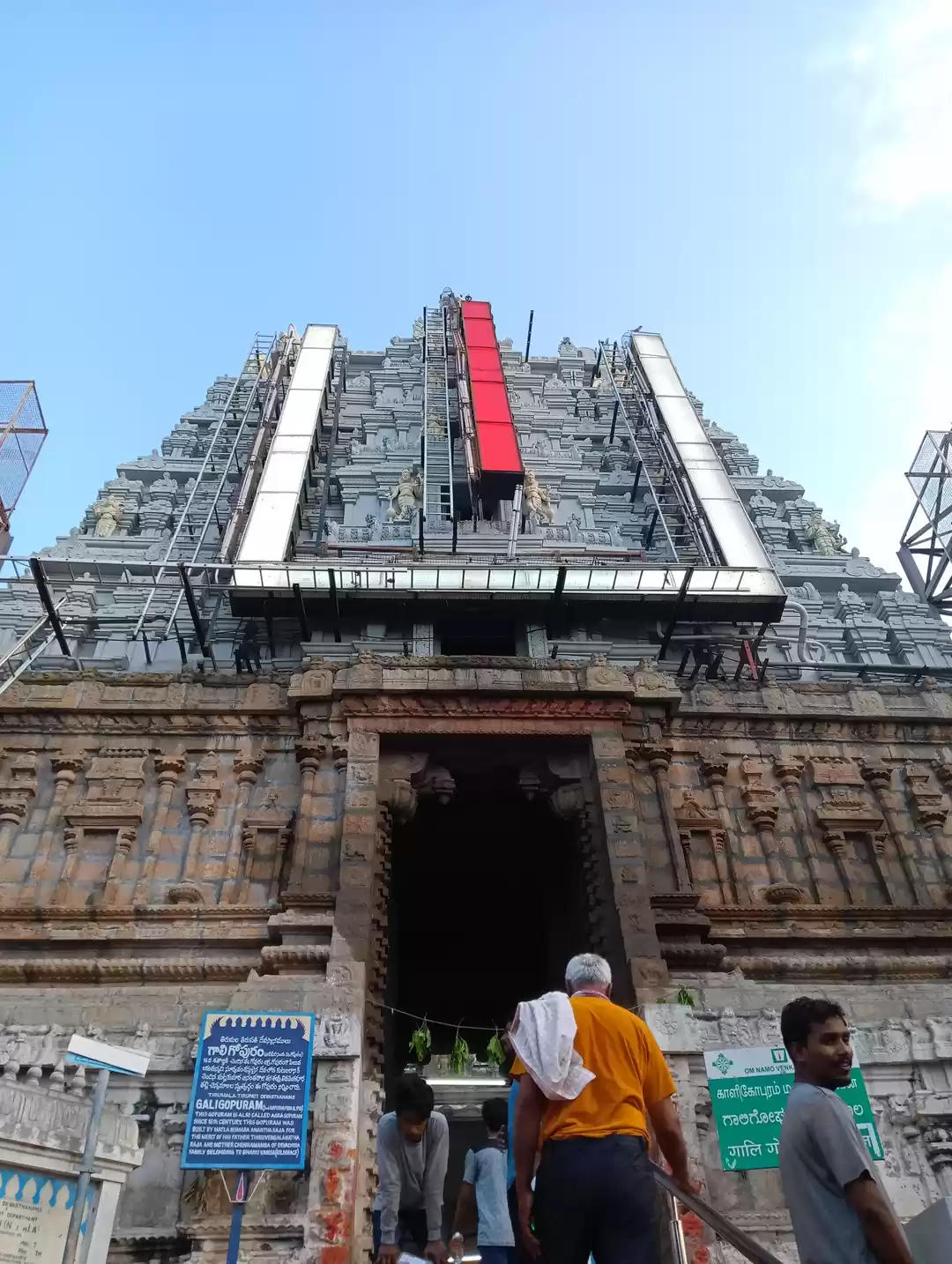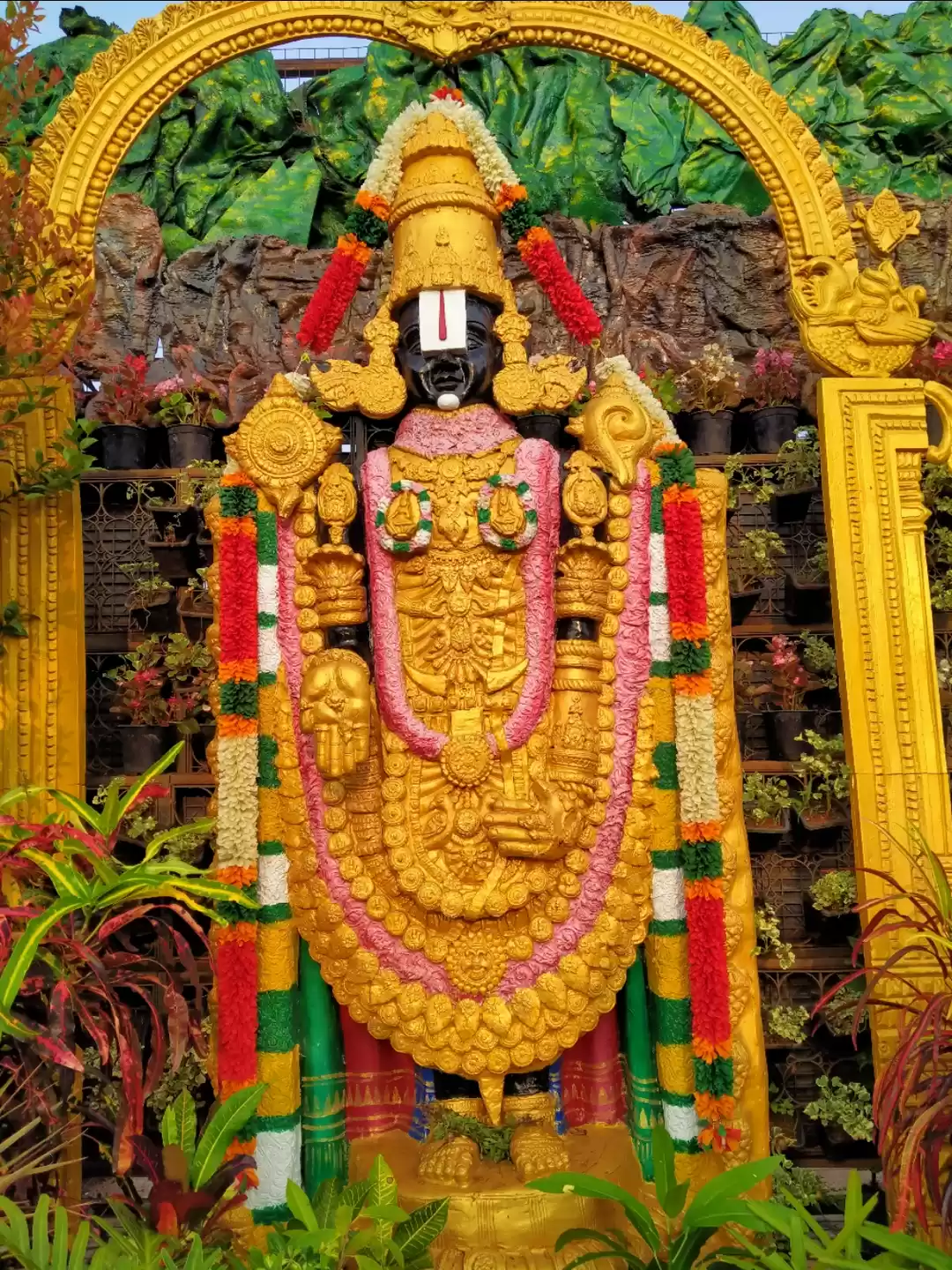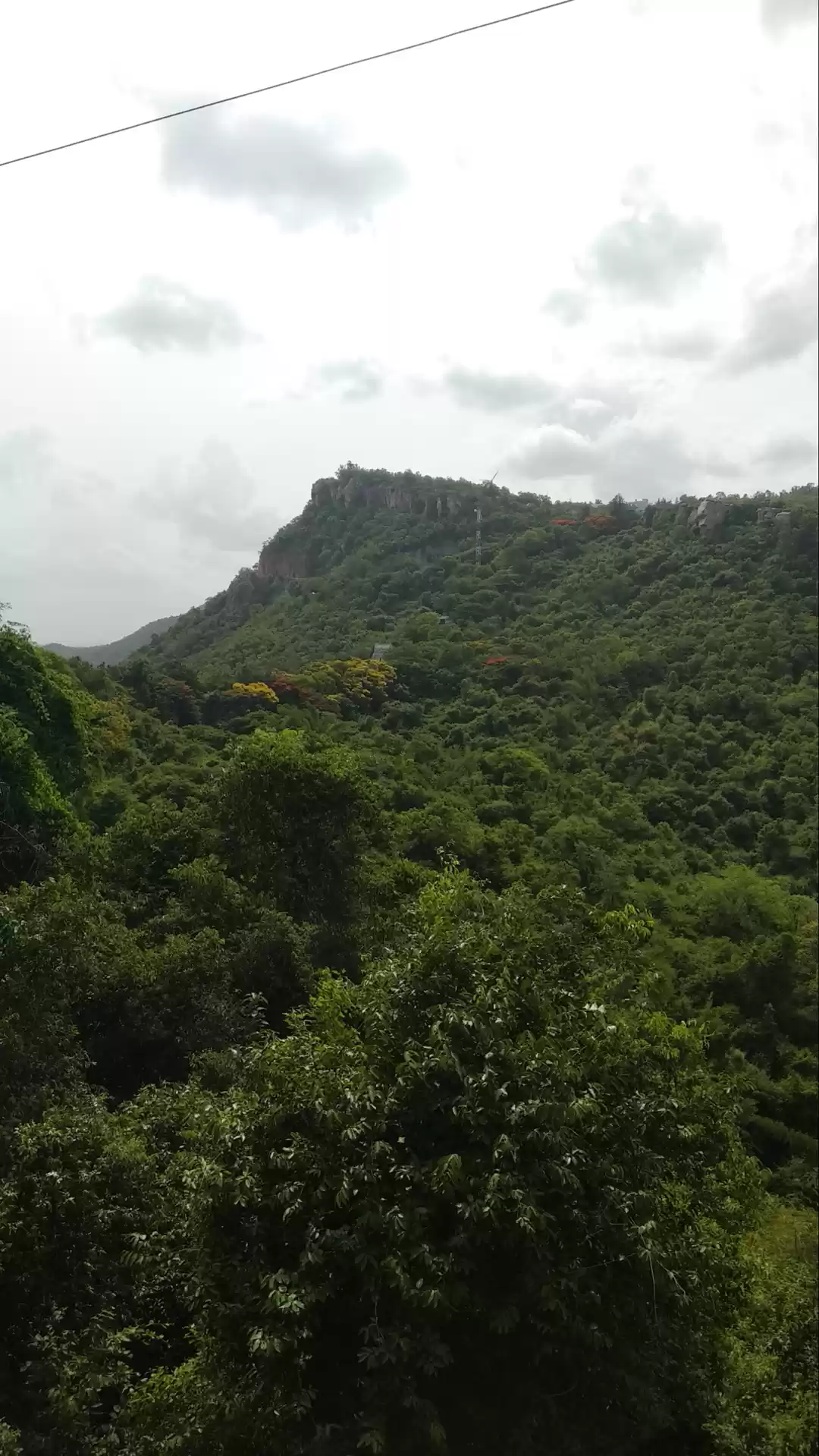Tirumala Tirupati Devasthanam, or TTD, is the trust that manages the Tirumala Venkateswara Temple and other temples in Tirupati and nearby areas. The Tirumala Venkateswara Temple, also known as the Balaji Temple, is one of the most visited and revered temples in India. It is dedicated to Lord Venkateswara, an incarnation of Lord Vishnu, who is believed to have manifested himself on the Tirumala Hills. Millions of pilgrims and tourists flock to this temple every year to seek the blessings of the Lord and witness the beauty and grandeur of the temple.
If you are planning to visit Tirumala Tirupati Devasthanam, you might have many questions and doubts about how to make the most of your trip. In this article, we will provide you with a complete guide to Tirumala Tirupati Devasthanam, covering its history, significance, services, facilities, attractions, and travel tips. By the end of this article, you will have all the information you need to plan and enjoy your visit to the abode of Lord Venkateswara.
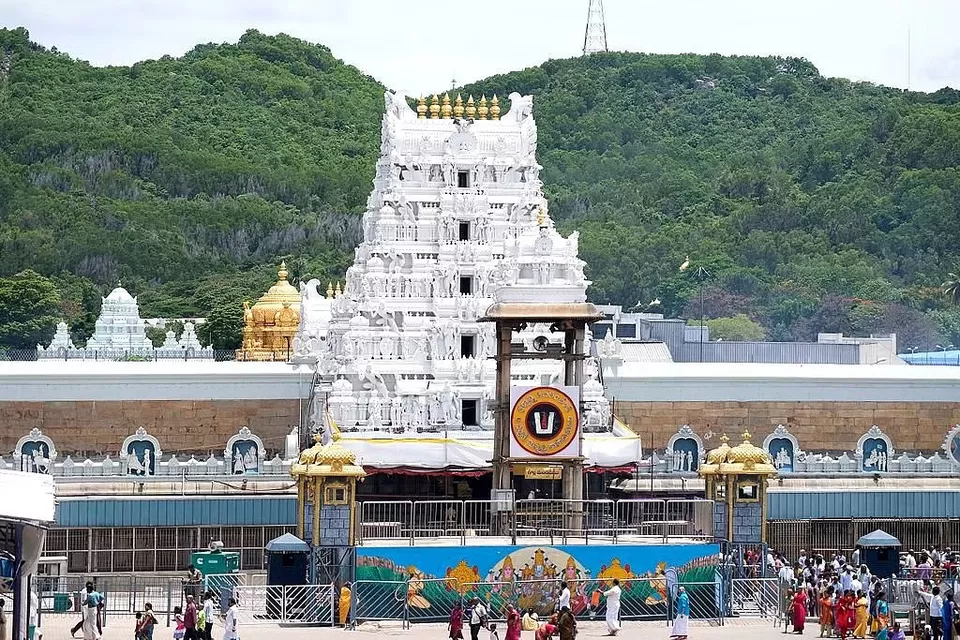
What is Tirumala Tirupati Devasthanam?
Tirumala Tirupati Devasthanam is the name of the trust that was established in 1932 by the Madras Presidency to administer and manage the Tirumala Venkateswara Temple and other temples in Tirupati and nearby areas. The trust is responsible for the maintenance, development, and welfare of the temples and the pilgrims. The trust also runs various religious, educational, cultural, and social activities and institutions.
The Tirumala Tirupati Devasthanam has a board of trustees, an executive officer, and various departments and committees to carry out its functions. The trust also has a website, www.tirumala.org, where you can find all the information and services related to the temples and the pilgrimage.
Why is Tirumala Tirupati Devasthanam important?
Tirumala Tirupati Devasthanam is important because it preserves and promotes the rich heritage and culture of the Tirumala Venkateswara Temple and other temples in Tirupati and nearby areas. The trust also provides various facilities and amenities to the pilgrims and tourists, such as accommodation, transport, food, medical, and security. The trust also ensures that the temples are well-maintained, clean, and safe.
The Tirumala Tirupati Devasthanam also has a vision and mission to spread the message and teachings of Lord Venkateswara and Hinduism to the world. The trust also aims to serve the society and humanity through various charitable and philanthropic activities and institutions.
What does Tirumala Tirupati Devasthanam offer?
Tirumala Tirupati Devasthanam offers a range of services and facilities to the pilgrims and tourists, such as:
Darshan: Darshan is the divine sight of the Lord, which is the main purpose and goal of the pilgrimage. Tirumala Tirupati Devasthanam offers various types of darshan to the pilgrims, such as Sarvadarshan, Special Entry Darshan, Divya Darshan, and Special Darshan for Physically Disabled and Aged. You can book your darshan online or offline, depending on the availability and preference.
Sevas: Sevas are the ritual services that are performed by the devotees to the Lord, such as offering flowers, fruits, clothes, ornaments, or money. Tirumala Tirupati Devasthanam offers various types of sevas to the pilgrims, such as Daily Sevas, Weekly Sevas, Annual or Periodical Sevas, and Arjitha Sevas. You can book your sevas online or offline, depending on the availability and preference.
Accommodation: Accommodation is the lodging facility that is provided by Tirumala Tirupati Devasthanam to the pilgrims and tourists. Tirumala Tirupati Devasthanam has various types of accommodation facilities at Tirumala and Tirupati, such as Advance Reservation, Current Booking, Rest Houses, and Package Tours. You can book your accommodation online or offline, depending on the availability and preference.
Transport: Transport is the conveyance facility that is provided by Tirumala Tirupati Devasthanam to the pilgrims and tourists. Tirumala Tirupati Devasthanam has various types of transport facilities to reach Tirupati and Tirumala, such as Free Buses, Railway Booking Office, and Automobile Clinic. You can avail of these transport facilities online or offline, depending on the availability and preference.
Others: Tirumala Tirupati Devasthanam also offers other services and facilities to the pilgrims and tourists, such as Anna Prasadam (free food), Kalyana Katta (tonsuring), Medical, Fulfilling Vows, and Publications. You can avail of these services and facilities online or offline, depending on the availability and preference.
Tirumala Venkateswara Temple
The Tirumala Venkateswara Temple is the main attraction of Tirumala Tirupati Devasthanam. It is one of the most visited and revered temples in India. It is dedicated to Lord Venkateswara, an incarnation of Lord Vishnu, who is believed to have manifested himself on the Tirumala Hills. The temple is located on the seventh peak of the Tirumala Hills, called Venkatadri, which is about 22 km from Tirupati. The temple is also known as the Balaji Temple, the Srinivasa Temple, or the Tirupati Temple.
The History and Legend of Tirumala Venkateswara Temple
The Tirumala Venkateswara Temple has a long and fascinating history and legend. According to the legend, Lord Vishnu, in his previous incarnation as Lord Rama, promised to his devotee, an ape-like being called Hanuman, that he would grant him darshan in his next incarnation as Lord Venkateswara. However, when Lord Vishnu incarnated as Lord Venkateswara, he was cursed by a sage called Bhrigu, who kicked him on his chest, where his consort, Goddess Lakshmi, resides. As a result, Goddess Lakshmi left him and went to the earth. Lord Venkateswara followed her and reached the Tirumala Hills, where he met a cowherd girl called Padmavathi, who was the reincarnation of Goddess Lakshmi. He fell in love with her and married her, but he also had to pay a huge amount of money to her father, the king of the place, as dowry. To pay the debt, he took a loan from Kubera, the god of wealth, and agreed to stay on the Tirumala Hills until he repays the loan. He also asked his devotees to help him in repaying the loan by offering him money and valuables. This is why the devotees offer money and valuables to Lord Venkateswara in the temple.
According to the history, the Tirumala Venkateswara Temple was built by the Pallava king, Thondaiman, in the 8th century CE. The temple was later renovated and expanded by various dynasties and rulers, such as the Cholas, the Pandyas, the Vijayanagara Empire, the Nayakas, the Marathas, the Mysore Kingdom, and the British. The temple was also patronized and donated by various kings and devotees, such as Krishnadevaraya, Ramanuja, Annamacharya, and Rukmini Devi Arundale. The temple was also protected and preserved by various saints and sages, such as Ramananda, Madhvacharya, and Vedanta Desika. The temple was also visited and praised by various poets and scholars, such as Kalidasa, Adi Shankara, and Jayadeva.
The Architecture and Features of Tirumala Venkateswara Temple
The Tirumala Venkateswara Temple has a magnificent and splendid architecture and features. The temple covers an area of about 2.2 acres and has a height of about 50 feet. The temple has four main entrances, called gopurams, which are decorated with intricate carvings and sculptures. The main entrance, called the Mahadwaram, has a huge tower, called the Ananda Nilayam, which has a golden dome, called the Vimana, on top of it. The Vimana has a golden flagstaff, called the Dhwajasthambham, which has a flag, called the Garudadhwaja, with the image of Garuda, the vehicle of Lord Vishnu, on it.
The temple has a sanctum sanctorum, called the Garbha Griha, where the idol of Lord Venkateswara is installed. The idol is about 8 feet tall and is made of black stone. The idol has four hands, two of which hold a conch and a discus, the symbols of Lord Vishnu, and the other two are in the gesture of blessing and protection. The idol wears a crown, called the Kireeta, which has a large emerald, called the Chintamani, embedded in it. The idol also wears various ornaments, such as earrings, necklaces, bracelets, and anklets, which are made of gold and precious stones. The idol also has a sacred mark, called the Namam, on its forehead, which is made of camphor and saffron. The idol is adorned with various flowers, such as jasmine, lotus, and tulsi, which are offered by the devotees.
The temple also has a hall, called the Mukha Mandapam, where the devotees can have a glimpse of the Lord from a distance. The hall has several pillars, which are carved with the images of various gods and goddesses. The hall also has a lamp, called the Jyotirlinga, which is believed to be lit by Lord Brahma, the creator of the universe, and is never extinguished. The hall also has a silver altar, called the Bangaru Vakili, which leads to the sanctum sanctorum. The altar has two statues of dwarapalakas, or gatekeepers, called Jaya and Vijaya, who guard the entrance to the Lord’s abode.
The temple also has a shrine, called the Bhu Varaha Swamy Temple, which is dedicated to Lord Varaha, the boar incarnation of Lord Vishnu, who is believed to have given the Tirumala Hills to Lord Venkateswara. The devotees are supposed to visit this shrine before visiting the main temple, as per the tradition. The shrine has an idol of Lord Varaha, along with his consort, Goddess Lakshmi.
The temple also has a pond, called the Swami Pushkarini, which is considered to be sacred and auspicious. The pond is believed to have originated from the lotus pond of Lord Vishnu’s abode, Vaikuntha. The pond is also believed to have the power to wash away the sins and grant the wishes of the devotees. The devotees take a dip in the pond before entering the temple, as per the custom. The pond also has a temple, called the Sri Varahaswami Temple, on its banks, which is dedicated to Lord Varaha.
The temple also has a museum, called the Sri Venkateswara Museum, which displays the history, culture, and art of the temple and the Tirumala Tirupati Devasthanam. The museum has various exhibits, such as sculptures, paintings, manuscripts, coins, weapons, and ornaments, which belong to different periods and dynasties. The museum also has a gallery, called the Ananda Nilayam Gallery, which showcases the replicas of the ornaments and valuables that are offered to Lord Venkateswara by the devotees.

The Rituals and Festivals of Tirumala Venkateswara Temple
The Tirumala Venkateswara Temple has various rituals and festivals that are performed by the priests and the devotees throughout the year. The rituals and festivals are meant to express the devotion and gratitude to the Lord, as well as to celebrate his glory and grace. Some of the rituals and festivals are:
Suprabhatam: Suprabhatam is the ritual of waking up the Lord in the early morning, around 3 am, with the recitation of hymns and prayers. The ritual is followed by the offering of milk, fruits, and sweets to the Lord, as well as the decoration of the idol with fresh flowers and ornaments.
Thomala Seva: Thomala Seva is the ritual of adorning the Lord with garlands of flowers, such as tulsi, jasmine, and lotus, around 4 am. The ritual is accompanied by the singing of devotional songs and the playing of musical instruments.
Archana: Archana is the ritual of reciting the names and attributes of the Lord, around 4:30 am. The ritual is performed by the chief priest, who offers flowers, incense, and lamps to the Lord, while chanting the 108 names of the Lord, called the Ashtottara Shatanamavali.
Kalyanotsavam: Kalyanotsavam is the ritual of celebrating the wedding of the Lord with his consorts, Goddesses Lakshmi and Padmavathi, around 12 pm. The ritual is performed by the priests, who dress up the idols of the Lord and his consorts in bridal attire and ornaments, and conduct the wedding ceremony, such as the exchange of garlands, the tying of the sacred thread, and the blessing of the couple.
Brahmotsavam: Brahmotsavam is the festival of celebrating the glory and grace of the Lord, which lasts for nine days, usually in the month of September or October. The festival is marked by the procession of the Lord and his consorts on various vehicles, such as the eagle, the lion, the elephant, the horse, and the chariot, around the temple and the Tirumala Hills. The festival also includes various cultural and religious programs, such as music, dance, drama, and discourses. The festival culminates with the grand finale, called the Rathotsavam, which is the procession of the Lord on a huge wooden chariot, pulled by thousands of devotees.
Vaikunta Ekadasi: Vaikunta Ekadasi is the festival of celebrating the liberation and salvation of the devotees, which falls on the 11th day of the bright fortnight of the month of December or January. The festival is marked by the opening of the Vaikunta Dwaram, or the gate of heaven, which is located on the northern side of the temple. The devotees believe that passing through this gate will grant them the entry to the abode of Lord Vishnu, Vaikuntha. The festival also includes the special darshan of the Lord, who is adorned with a diamond crown, called the Vajra Kireeta, and a diamond necklace, called the Vajra Haara.
Other Temples under Tirumala Tirupati Devasthanam
This section will showcase the other temples managed by Tirumala Tirupati Devasthanam, their legends, timings, sevas, and festivals. It will also include some tertiary keywords, such as Padmavathi, Govindaraja, Kapileswara, and Kodandarama.
Sri Padmavathi Ammavari Temple
Sri Padmavathi Ammavari Temple is a temple dedicated to Goddess Padmavathi, the consort of Lord Venkateswara, who is also known as Alamelu Manga or Alamelu Mangamma. The temple is located in Tiruchanur, about 5 km from Tirupati. The temple is also known as the Alamelu Mangapuram Temple or the Tiruchanur Temple.
The legend of the temple is that Goddess Padmavathi was born as the daughter of Akasa Raja, the king of the place, who found her in a lotus flower while ploughing the land. The goddess grew up as a beautiful and pious princess, who was devoted to Lord Venkateswara. One day, Lord Venkateswara came to the earth in the disguise of a hunter and met the princess in the forest. He fell in love with her and asked her hand in marriage. The king agreed to the marriage, but he also demanded a huge amount of money as dowry. Lord Venkateswara borrowed the money from Kubera and married the princess in a grand ceremony. The temple is believed to be the place where the marriage took place.
The temple has a sanctum sanctorum, where the idol of Goddess Padmavathi is installed. The idol is about 4 feet tall and is made of gold. The idol has four hands, two of which hold a lotus and a discus, and the other two are in the gesture of blessing and protection. The idol wears a crown, which has a large ruby, called the Padmaraga, embedded in it. The idol also wears various ornaments, such as earrings, necklaces, bracelets, and anklets, which are made of gold and precious stones. The idol is adorned with various flowers, such as jasmine, lotus, and tulsi, which are offered by the devotees.
The temple also has a hall, called the Mukha Mandapam, where the devotees can have a glimpse of the goddess from a distance. The hall has several pillars, which are carved with the images of various gods and goddesses. The hall also has a lamp, which is believed to be lit by Lord Brahma, the creator of the universe, and is never extinguished. The hall also has a silver altar, which leads to the sanctum sanctorum. The altar has two statues of dwarapalakas, or gatekeepers, who guard the entrance to the goddess’s abode.
The temple also has a shrine, called the Sri Krishna Swamy Temple, which is dedicated to Lord Krishna, the eighth incarnation of Lord Vishnu, who is believed to have visited the temple and blessed the goddess. The shrine has an idol of Lord Krishna, along with his consort, Goddess Rukmini.
The temple also has a pond, called the Padma Sarovaram, which is considered to be sacred and auspicious. The pond is believed to have originated from the tears of Goddess Padmavathi, who cried when she was separated from Lord Venkateswara. The pond is also believed to have the power to cure the diseases and grant the wishes of the devotees. The devotees take a dip in the pond before entering the temple, as per the custom. The pond also has a temple, called the Sri Surya Narayana Swamy Temple, on its banks, which is dedicated to Lord Surya, the sun god.
The temple has various timings, sevas, and festivals that are performed by the priests and the devotees throughout the year. Some of the sevas are:
Suprabhatam: Suprabhatam is the ritual of waking up the goddess in the early morning, around 5 am, with the recitation of hymns and prayers. The ritual is followed by the offering of milk, fruits, and sweets to the goddess, as well as the decoration of the idol with fresh flowers and ornaments.
Sahasranama Archana: Sahasranama Archana is the ritual of reciting the names and attributes of the goddess, around 7:30 am. The ritual is performed by the chief priest, who offers flowers, incense, and lamps to the goddess, while chanting the 1000 names of the goddess, called the Lalitha Sahasranamavali.
Kalyanotsavam: Kalyanotsavam is the ritual of celebrating the wedding of the goddess with Lord Venkateswara, around 11 am. The ritual is performed by the priests, who dress up the idols of the goddess and the Lord in bridal attire and ornaments, and conduct the wedding ceremony, such as the exchange of garlands, the tying of the sacred thread, and the blessing of the couple.
Unjal Seva: Unjal Seva is the ritual of swinging the idols of the goddess and the Lord on a decorated swing, around 5 pm. The ritual is accompanied by the singing of devotional songs and the playing of musical instruments.
Ekantha Seva: Ekantha Seva is the ritual of putting the goddess to sleep in the night, around 9 pm. The ritual is followed by the offering of milk, fruits, and sweets to the goddess, as well as the removal of the flowers and ornaments from the idol.
Some of the festivals are:
Karthika Brahmotsavam: Karthika Brahmotsavam is the festival of celebrating the glory and grace of the goddess, which lasts for nine days, usually in the month of November or December. The festival is marked by the procession of the goddess and the Lord on various vehicles, such as the elephant, the lion, the horse, and the chariot, around the temple and the Tiruchanur town. The festival also includes various cultural and religious programs, such as music, dance, drama, and discourses. The festival culminates with the grand finale, called the Rathotsavam, which is the procession of the goddess and the Lord on a huge wooden chariot, pulled by thousands of devotees.
Panchami Teertham: Panchami Teertham is the festival of celebrating the birth anniversary of the goddess, which falls on the fifth day of the bright fortnight of the month of December or January. The festival is marked by the special darshan of the goddess, who is adorned with a diamond crown, called the Vajra Kireeta, and a diamond necklace, called the Vajra Haara. The festival also includes the bathing of the idol of the goddess in the Padma Sarovaram, which is called the Teertham, or the holy water. The festival also includes the distribution of the Teertham to the devotees, who believe that it has the power to grant the boons and blessings of the goddess.
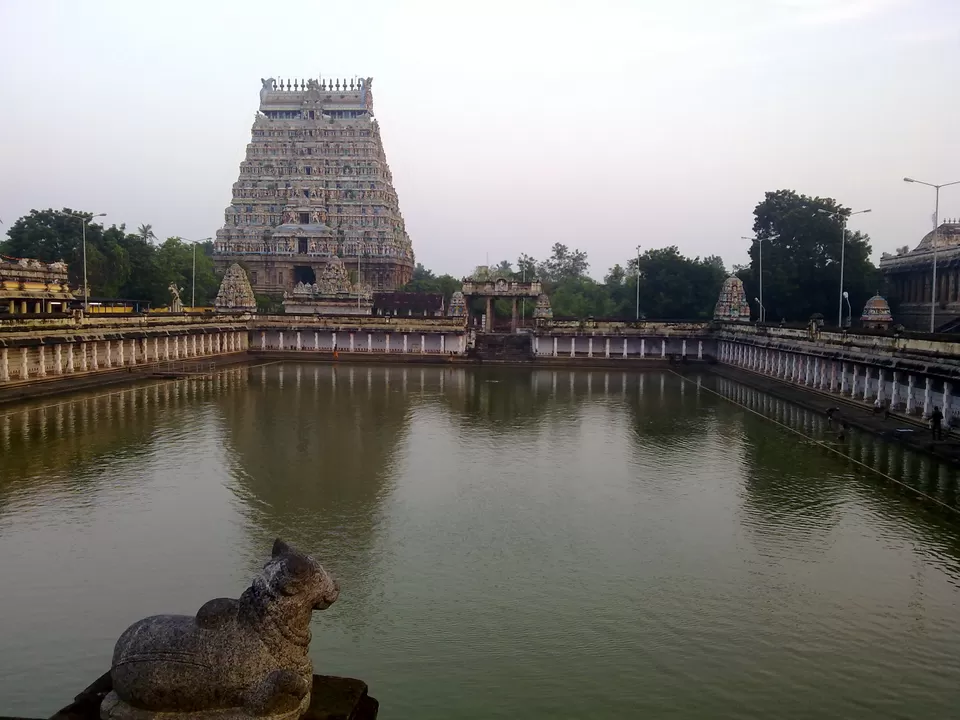
Sri Govindarajaswami Temple
Sri Govindarajaswami Temple is a temple dedicated to Lord Govindaraja, who is a form of Lord Vishnu, and is also considered to be the elder brother of Lord Venkateswara. The temple is located in Tirupati, about 1 km from the Tirupati railway station. The temple is also known as the Tirupati Temple or the Tirupati Balaji Temple.
The legend of the temple is that Lord Govindaraja was installed by Saint Ramanuja, the founder of the Sri Vaishnava sect, in the 12th century CE. Saint Ramanuja was a great devotee of Lord Vishnu and wanted to spread his teachings and worship to the masses. He found an idol of Lord Govindaraja in a nearby hill and brought it to Tirupati. He installed the idol in a temple, which was built by the king Yadava Raya, and consecrated it with the rituals and mantras. He also established the rules and regulations for the temple administration and worship.
The temple has a sanctum sanctorum, where the idol of Lord Govindaraja is installed. The idol is about 7 feet tall and is made of stone. The idol has four hands, two of which hold a conch and a discus, and the other two are in the gesture of blessing and protection. The idol wears a crown, which has a large diamond, called the Govindaraja Vajra, embedded in it. The idol also wears various ornaments, such as earrings, necklaces, bracelets, and anklets, which are made of gold and precious stones. The idol is adorned with various flowers, such as jasmine, lotus, and tulsi, which are offered by the devotees.
The temple also has a hall, called the Mukha Mandapam, where the devotees can have a glimpse of the Lord from a distance. The hall has several pillars, which are carved with the images of various gods and goddesses. The hall also has a lamp, which is believed to be lit by Lord Brahma, the creator of the universe, and is never extinguished. The hall also has a silver altar, which leads to the sanctum sanctorum. The altar has two statues of dwarapalakas, or gatekeepers, who guard the entrance to the Lord’s abode.
The temple also has a shrine, called the Sri Parthasarathy Swamy Temple, which is dedicated to Lord Krishna, the charioteer of Arjuna, the hero of the Mahabharata, an epic poem. The shrine has an idol of Lord Krishna, along with his consort, Goddess Rukmini, and his friend, Arjuna.
The temple also has a pond, called the Pushkarini, which is considered to be sacred and auspicious. The pond is believed to have originated from the lotus pond of Lord Vishnu’s abode, Vaikuntha. The pond is also believed to have the power to wash away the sins and grant the wishes of the devotees. The devotees take a dip in the pond before entering the temple, as per the custom. The pond also has a temple, called the Sri Lakshmi Narasimha Swamy Temple, on its banks, which is dedicated to Lord Narasimha, the half-man half-lion incarnation of Lord Vishnu.
The temple has various timings, sevas, and festivals that are performed by the priests and the devotees throughout the year. Some of the sevas are:
Suprabhatam: Suprabhatam is the ritual of waking up the Lord in the early morning, around 5 am, with the recitation of hymns and prayers. The ritual is followed by the offering of milk, fruits, and sweets to the Lord, as well as the decoration of the idol with fresh flowers and ornaments.
Thomala Seva: Thomala Seva is the ritual of adorning the Lord with garlands of flowers, such as tulsi, jasmine, and lotus, around 6:30 am. The ritual is accompanied by the singing of devotional songs and the playing of musical instruments.
Archana: Archana is the ritual of reciting the names and attributes of the Lord, around 7:30 am. The ritual is performed by the chief priest, who offers flowers, incense, and lamps to the Lord, while chanting the 108 names of the Lord, called the Ashtottara Shatanamavali.
Unjal Seva: Unjal Seva is the ritual of swinging the idols of the Lord and his consorts on a decorated swing, around 5:30 pm. The ritual is accompanied by the singing of devotional songs and the playing of musical instruments.
Ekantha Seva: Ekantha Seva is the ritual of putting the Lord to sleep in the night, around 9 pm. The ritual is followed by the offering of milk, fruits, and sweets to the Lord, as well as the removal of the flowers and ornaments from the idol.
Some of the festivals are:
Brahmotsavam: Brahmotsavam is the festival of celebrating the glory and grace of the Lord, which lasts for nine days, usually in the month of May or June. The festival is marked by the procession of the Lord and his consorts on various vehicles, such as the eagle, the lion, the horse, and the chariot, around the temple and the Tirupati town. The festival also includes various cultural and religious programs, such as music, dance, drama, and discourses. The festival culminates with the grand finale, called the Rathotsavam, which is the procession of the Lord on a huge wooden chariot, pulled by thousands of devotees.
Vaikunta Ekadasi: Vaikunta Ekadasi is the festival of celebrating the liberation and salvation of the devotees, which falls on the 11th day of the bright fortnight of the month of December or January. The festival is marked by the opening of the Vaikunta Dwaram, or the gate of heaven, which is located on the northern side of the temple. The devotees believe that passing through this gate will grant them the entry to the abode of Lord Vishnu, Vaikuntha. The festival also includes the special darshan of the Lord, who is adorned with a diamond crown, called the Vajra Kireeta, and a diamond necklace, called the Vajra Haara.
Sri Kapileswaraswamy Temple
Sri Kapileswaraswamy Temple is a temple dedicated to Lord Shiva, who is also known as Kapileswara, the lord of the sage Kapila. The temple is located in Tirupati, about 3 km from the Tirupati railway station. The temple is also known as the Kapila Theertham Temple or the Alwar Theertham Temple.
The legend of the temple is that Lord Shiva once appeared in the form of a lingam, or a phallic symbol, on the banks of a waterfall, which is called the Kapila Theertham, or the holy water of Kapila. The waterfall is believed to have originated from the hair of Lord Shiva, which is called the Jata, or the matted locks. The waterfall is also believed to have the power to cleanse the sins and grant the boons of the devotees. The sage Kapila, who was a great devotee of Lord Shiva, performed penance and worshiped the lingam at this place. He also taught the Vedas, the sacred scriptures, to his disciples at this place. The temple is believed to be the place where the sage Kapila attained liberation, or moksha, from the cycle of birth and death.
The temple has a sanctum sanctorum, where the lingam of Lord Shiva is installed. The lingam is about 3 feet tall and is made of stone. The lingam is decorated with various flowers, such as jasmine, lotus, and bilva, which are offered by the devotees. The lingam is also smeared with various substances, such as sandalwood, turmeric, and vermilion, which are considered to be auspicious and sacred.
The temple also has a hall, called the Mukha Mandapam, where the devotees can have a glimpse of the Lord from a distance. The hall has several pillars, which are carved with the images of various gods and goddesses. The hall also has a lamp, which is believed to be lit by Lord Brahma, the creator of the universe, and is never extinguished. The hall also has a silver altar, which leads to the sanctum sanctorum. The altar has two statues of dwarapalakas, or gatekeepers, who guard the entrance to the Lord's abode.
The temple also has a shrine, called the Sri Vinayaka Swamy Temple, which is dedicated to Lord Ganesha, the elephant-headed god, who is the son of Lord Shiva and Goddess Parvati. The shrine has an idol of Lord Ganesha, who is also known as Vinayaka, the remover of obstacles. The devotees worship Lord Ganesha before worshiping Lord Shiva, as per the tradition.
The temple also has a pond, called the Kapila Theertham, which is considered to be sacred and auspicious. The pond is formed by the waterfall, which flows from the Tirumala Hills, and joins the Swarnamukhi River, which flows nearby. The pond is also believed to have the power to wash away the sins and grant the wishes of the devotees. The devotees take a dip in the pond before entering the temple, as per the custom. The pond also has a temple, called the Sri Agastheeswara Swamy Temple, on its banks, which is dedicated to Lord Shiva, who is also known as Agastheeswara, the lord of the sage Agastya.
The temple has various timings, sevas, and festivals that are performed by the priests and the devotees throughout the year. Some of the sevas are:
Suprabhatam: Suprabhatam is the ritual of waking up the Lord in the early morning, around 5 am, with the recitation of hymns and prayers. The ritual is followed by the offering of milk, fruits, and sweets to the Lord, as well as the decoration of the lingam with fresh flowers and ornaments.
Rudrabhishekam: Rudrabhishekam is the ritual of bathing the lingam of Lord Shiva with various liquids, such as water, milk, curd, honey, and ghee, around 6:30 am. The ritual is accompanied by the chanting of the Rudram, or the hymn of Lord Shiva, and the offering of flowers, incense, and lamps to the Lord.
Kalyanotsavam: Kalyanotsavam is the ritual of celebrating the wedding of Lord Shiva with his consort, Goddess Parvati, around 11 am. The ritual is performed by the priests, who dress up the idols of Lord Shiva and Goddess Parvati in bridal attire and ornaments, and conduct the wedding ceremony, such as the exchange of garlands, the tying of the sacred thread, and the blessing of the couple.
Ekantha Seva: Ekantha Seva is the ritual of putting the Lord to sleep in the night, around 9 pm. The ritual is followed by the offering of milk, fruits, and sweets to the Lord, as well as the removal of the flowers and ornaments from the lingam.
Some of the festivals are:
Maha Shivaratri: Maha Shivaratri is the festival of celebrating the night of Lord Shiva, which falls on the 14th day of the dark fortnight of the month of February or March. The festival is marked by the special darshan of the Lord, who is adorned with a silver crown, called the Rajata Kireeta, and a silver necklace, called the Rajata Haara. The festival also includes the fasting, vigil, and worship of the Lord throughout the night, as well as the offering of bilva leaves, which are considered to be dear to the Lord.
Karthika Deepam: Karthika Deepam is the festival of celebrating the light of Lord Shiva, which falls on the full moon day of the month of November or December. The festival is marked by the lighting of thousands of lamps, called the Deepam, around the temple and the pond. The festival also includes the procession of the Lord and his consort on a decorated palanquin, called the Pallaki, around the temple and the town. The festival also includes the offering of camphor, which is considered to be the symbol of the Lord's flame.
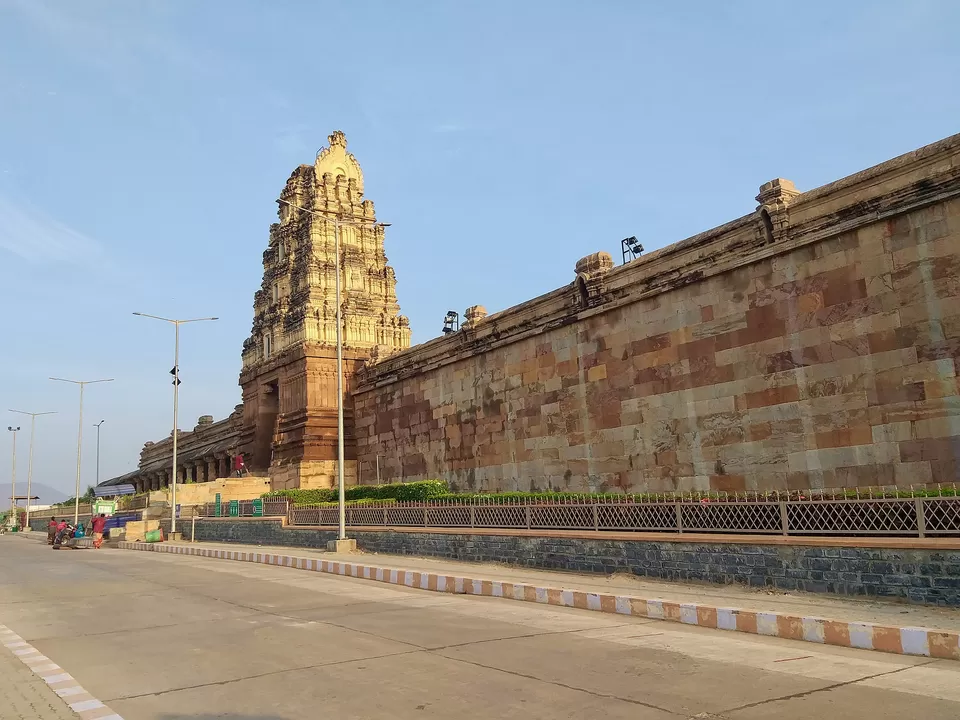
Sri Kodandaramaswamy Temple
Sri Kodandaramaswamy Temple is a temple dedicated to Lord Rama, who is also known as Kodandarama, the wielder of the bow, along with his consort, Goddess Sita, and his brother, Lord Lakshmana. The temple is located in Tirupati, about 1 km from the Tirupati railway station. The temple is also known as the Ramalayam Temple or the Chitrakuta Temple.
The legend of the temple is that Lord Rama, along with Goddess Sita and Lord Lakshmana, visited this place during their exile in the forest, which is called the Chitrakuta, or the hill of wonders. The temple is believed to be the place where Lord Rama performed the funeral rites for the bird Jatayu, who sacrificed his life to protect Goddess Sita from the demon king Ravana, who abducted her. The temple is also believed to be the place where Lord Rama met the monkey king Sugriva, who became his ally and helped him in rescuing Goddess Sita.
The temple has a sanctum sanctorum, where the idols of Lord Rama, Goddess Sita, and Lord Lakshmana are installed. The idols are about 6 feet tall and are made of stone. The idols are decorated with various flowers, such as jasmine, lotus, and tulsi, which are offered by the devotees. The idols are also smeared with various substances, such as sandalwood, turmeric, and vermilion, which are considered to be auspicious and sacred.
The temple also has a hall, called the Mukha Mandapam, where the devotees can have a glimpse of the Lord and his consort from a distance. The hall has several pillars, which are carved with the images of various gods and goddesses. The hall also has a lamp, which is believed to be lit by Lord Brahma, the creator of the universe, and is never extinguished. The hall also has a silver altar, which leads to the sanctum sanctorum. The altar has two statues of dwarapalakas, or gatekeepers, who guard the entrance to the Lord's abode.
The temple also has a shrine, called the Sri Anjaneya Swamy Temple, which is dedicated to Lord Hanuman, the monkey god, who is the son of the wind god Vayu and the devotee of Lord Rama. The shrine has an idol of Lord Hanuman, who is also known as Anjaneya, the son of Anjana, a celestial nymph. The idol is about 10 feet tall and is made of stone. The idol is decorated with various flowers, such as jasmine, lotus, and tulsi, which are offered by the devotees. The idol is also smeared with various substances, such as sandalwood, turmeric, and vermilion, which are considered to be auspicious and sacred.
The temple also has a pond, called the Ramakrishna Theertham, which is considered to be sacred and auspicious. The pond is believed to have originated from the tears of Lord Rama, who cried when he was separated from Goddess Sita. The pond is also believed to have the power to wash away the sins and grant the wishes of the devotees. The devotees take a dip in the pond before entering the temple, as per the custom. The pond also has a temple, called the Sri Lakshmi Narayana Swamy Temple, on its banks, which is dedicated to Lord Vishnu, who is also known as Narayana, the lord of Lakshmi, the goddess of wealth.
The temple has various timings, sevas, and festivals that are performed by the priests and the devotees throughout the year. Some of the sevas are:
Suprabhatam: Suprabhatam is the ritual of waking up the Lord and his consort in the early morning, around 5 am, with the recitation of hymns and prayers. The ritual is followed by the offering of milk, fruits, and sweets to the Lord and his consort, as well as the decoration of the idols with fresh flowers and ornaments.
Thomala Seva: Thomala Seva is the ritual of adorning the Lord and his consort with garlands of flowers, such as tulsi, jasmine, and lotus, around 6:30 am. The ritual is accompanied by the singing of devotional songs and the playing of musical instruments.
Archana: Archana is the ritual of reciting the names and attributes of the Lord and his consort, around 7:30 am. The ritual is performed by the chief priest, who offers flowers, incense, and lamps to the Lord and his consort, while chanting the 108 names of the Lord and his consort, called the Ashtottara Shatanamavali.
Unjal Seva: Unjal Seva is the ritual of swinging the idols of the Lord and his consort on a decorated swing, around 5:30 pm. The ritual is accompanied by the singing of devotional songs and the playing of musical instruments.
Ekantha Seva: Ekantha Seva is the ritual of putting the Lord and his consort to sleep in the night, around 9 pm. The ritual is followed by the offering of milk, fruits, and sweets to the Lord and his consort, as well as the removal of the flowers and ornaments from the idols.
Some of the festivals are:
Sri Rama Navami: Sri Rama Navami is the festival of celebrating the birth anniversary of Lord Rama, which falls on the ninth day of the bright fortnight of the month of March or April. The festival is marked by the special darshan of the Lord and his consort, who are adorned with a golden crown, called the Swarna Kireeta, and a golden necklace, called the Swarna Haara. The festival also includes the recitation of the Ramayana, or the epic story of Lord Rama, and the offering of panakam, or a sweet drink made of jaggery and water, which is considered to be the favorite of the Lord.
Sri Rama Pattabhishekam: Sri Rama Pattabhishekam is the festival of celebrating the coronation of Lord Rama, which falls on the 11th day of the bright fortnight of the month of March or April. The festival is marked by the procession of the Lord and his consort on a decorated palanquin, called the Pallaki, around the temple and the town. The festival also includes the performance of the Pattabhishekam, or the coronation ceremony, where the Lord and his consort are crowned as the king and queen of Ayodhya, the kingdom of Lord Rama. The festival also includes the offering of seethaphal, or a fruit called custard apple, which is considered to be the favorite of the Lord's consort.
How to Visit Tirumala Tirupati Devasthanam
If you are planning to visit Tirumala Tirupati Devasthanam, you might want to know some travel tips and information that will help you make the most of your trip. Here are some of the things you should know before visiting Tirumala Tirupati Devasthanam:
The Best Time to Visit Tirumala Tirupati Devasthanam: The best time to visit Tirumala Tirupati Devasthanam is between October and March, when the weather is pleasant and cool, and the festivals are celebrated with great fervor and enthusiasm. However, you can also visit Tirumala Tirupati Devasthanam at any time of the year, as the temple is open throughout the year, and the darshan and sevas are available every day. However, you should avoid visiting Tirumala Tirupati Devasthanam during the peak seasons, such as the summer months, the weekends, and the holidays, when the crowd is huge and the waiting time is long.
How to Reach Tirumala Tirupati Devasthanam: Tirumala Tirupati Devasthanam is well-connected by various modes of transport, such as air, train, road, and bus. You can reach Tirupati, the base town, by taking a flight to the Tirupati Airport, which is about 15 km from the town, or by taking a train to the Tirupati Railway Station, which is about 1 km from the town. You can also reach Tirupati by taking a bus from various cities and towns in Andhra Pradesh, Tamil Nadu, Karnataka, and Telangana, or by driving your own vehicle. From Tirupati, you can reach Tirumala, the hill town, by taking a bus from the Tirupati Bus Stand, which is about 2 km from the town, or by driving your own vehicle. You can also reach Tirumala by taking a walk from the Alipiri Footpath, which is about 9 km from the town, or from the Srivari Mettu Footpath, which is about 2 km from the town. However, you should note that you need to obtain a free pass from the Tirumala Tirupati Devasthanam to enter Tirumala by any mode of transport, and you should also follow the rules and regulations of the Tirumala Tirupati Devasthanam while traveling to Tirumala.
Where to Stay at Tirumala Tirupati Devasthanam: Tirumala Tirupati Devasthanam provides various types of accommodation facilities to the pilgrims and tourists, such as advance reservation, current booking, rest houses, and package tours. You can book your accommodation online or offline, depending on the availability and preference. You can also find various hotels, lodges, guest houses, and ashrams in Tirupati and Tirumala, which offer comfortable and affordable stay options. However, you should note that you need to book your accommodation in advance, as the demand is high and the availability is limited, especially during the peak seasons and festivals.
What to Wear at Tirumala Tirupati Devasthanam: Tirumala Tirupati Devasthanam has a dress code for the pilgrims and tourists, which is meant to respect the sanctity and dignity of the temple and the Lord. The dress code is as follows:
For men: Dhoti or lungi with uttareeyam or kurta pyjama.
For women: Saree or half-saree with blouse or churidar or salwar kameez with dupatta.
For children: Any decent and traditional dress.
The dress code is strictly enforced by the Tirumala Tirupati Devasthanam, and anyone who violates the dress code will not be allowed to enter the temple or the darshan queue. The dress code is also applicable to the pilgrims who take the footpaths to reach Tirumala. The Tirumala Tirupati Devasthanam also provides free lockers and cloak rooms to store the belongings of the pilgrims and tourists, such as bags, shoes, mobile phones, and cameras, which are not allowed inside the temple.
What to Do at Tirumala Tirupati Devasthanam
Tirumala Tirupati Devasthanam offers various activities and experiences to the pilgrims and tourists, such as:
Darshan: Darshan is the divine sight of the Lord, which is the main purpose and goal of the pilgrimage. Tirumala Tirupati Devasthanam offers various types of darshan to the pilgrims, such as Sarvadarshan, Special Entry Darshan, Divya Darshan, and Special Darshan for Physically Disabled and Aged. You can book your darshan online or offline, depending on the availability and preference. You can also get a free laddoo, or a sweet ball made of flour and sugar, which is considered to be the prasadam, or the sacred offering, of the Lord, along with your darshan ticket. You can also buy additional laddoos from the Tirumala Tirupati Devasthanam counters, if you wish.
Sevas: Sevas are the ritual services that are performed by the devotees to the Lord, such as offering flowers, fruits, clothes, ornaments, or money. Tirumala Tirupati Devasthanam offers various types of sevas to the pilgrims, such as Daily Sevas, Weekly Sevas, Annual or Periodical Sevas, and Arjitha Sevas. You can book your sevas online or offline, depending on the availability and preference. You can also get a free meal, called the anna prasadam, or the food offering, of the Lord, along with your seva ticket. You can also donate money or valuables to the Lord, through the hundi, or the donation box, which is located inside the temple.
Accommodation: Accommodation is the lodging facility that is provided by Tirumala Tirupati Devasthanam to the pilgrims and tourists. Tirumala Tirupati Devasthanam has various types of accommodation facilities at Tirumala and Tirupati, such as Advance Reservation, Current Booking, Rest Houses, and Package Tours. You can book your accommodation online or offline, depending on the availability and preference. You can also find various hotels, lodges, guest houses, and ashrams in Tirupati and Tirumala, which offer comfortable and affordable stay options. However, you should note that you need to book your accommodation in advance, as the demand is high and the availability is limited, especially during the peak seasons and festivals.
Transport: Transport is the conveyance facility that is provided by Tirumala Tirupati Devasthanam to the pilgrims and tourists. Tirumala Tirupati Devasthanam has various types of transport facilities to reach Tirupati and Tirumala, such as Free Buses, Railway Booking Office, and Automobile Clinic. You can avail of these transport facilities online or offline, depending on the availability and preference. You can also reach Tirumala by taking a walk from the Alipiri Footpath, which is about 9 km from Tirupati, or from the Srivari Mettu Footpath, which is about 2 km from Tirupati. However, you should note that you need to obtain a free pass from the Tirumala Tirupati Devasthanam to enter Tirumala by any mode of transport, and you should also follow the rules and regulations of the Tirumala Tirupati Devasthanam while traveling to Tirumala.
Others: Tirumala Tirupati Devasthanam also offers other activities and experiences to the pilgrims and tourists, such as Kalyana Katta, Medical, Fulfilling Vows, and Publications. You can avail of these activities and experiences online or offline, depending on the availability and preference. Some of these activities and experiences are:
Kalyana Katta: Kalyana Katta is the activity of tonsuring, or shaving, the head, which is considered to be a sign of surrender and devotion to the Lord. Many pilgrims and tourists perform this activity at Tirumala, as a vow or a thanksgiving to the Lord. Tirumala Tirupati Devasthanam provides free and hygienic facilities for tonsuring, such as blades, razors, scissors, and combs, as well as free lockers and cloak rooms to store the belongings of the pilgrims and tourists. Tirumala Tirupati Devasthanam also collects the hair that is offered by the pilgrims and tourists, and sells it to various companies, which use it to make wigs and other products. The revenue generated from the sale of the hair is used for the welfare and development of the temple and the pilgrims.
Medical: Medical is the facility of providing health care and emergency services to the pilgrims and tourists, who may face any illness or injury during their visit to Tirumala Tirupati Devasthanam. Tirumala Tirupati Devasthanam has various medical facilities, such as hospitals, clinics, dispensaries, and pharmacies, which offer free and quality treatment and medicines to the pilgrims and tourists. Tirumala Tirupati Devasthanam also has various medical staff, such as doctors, nurses, and paramedics, who are available round the clock to attend to the needs of the pilgrims and tourists. Tirumala Tirupati Devasthanam also has various medical equipment, such as ambulances, stretchers, and wheelchairs, which are used to transport and assist the pilgrims and tourists.
Fulfilling Vows: Fulfilling Vows is the activity of completing the promises and commitments that are made by the pilgrims and tourists to the Lord, in return for his blessings and favors. Many pilgrims and tourists make various vows to the Lord, such as offering money, valuables, hair, or food, or performing sevas, or fasting, or walking, or chanting, or reading, or singing, or dancing, or donating, or serving, or any other activity that is pleasing to the Lord. Tirumala Tirupati Devasthanam provides various facilities and amenities to help the pilgrims and tourists in fulfilling their vows, such as hundi, sevas, anna prasadam, kalyana katta, and publications. Tirumala Tirupati Devasthanam also encourages and appreciates the pilgrims and tourists who fulfill their vows, and blesses them with the grace and mercy of the Lord.
Publications: Publications is the facility of providing various books, magazines, CDs, DVDs, and other materials that are related to the temple and the Lord, to the pilgrims and tourists, who want to learn more about the history, culture, and art of Tirumala Tirupati Devasthanam. Tirumala Tirupati Devasthanam has various publications, such as Sri Venkateswara Bhakti Channel, Sri Venkateswara Prabha, Sri Venkateswara Vaibhavam, Sri Venkateswara Suprabhatam, Sri Venkateswara Sahasranamam, Sri Venkateswara Stotram, Sri Venkateswara Ashtakam, Sri Venkateswara Kavacham, and Sri Venkateswara Mahatyam, which offer various information and insights about the temple and the Lord. Tirumala Tirupati Devasthanam also sells these publications at various counters and stalls, which are located in Tirupati and Tirumala, as well as online, through its website, www.tirumala.org.
Conclusion
Tirumala Tirupati Devasthanam is a sacred and spectacular destination that offers a unique and unforgettable experience to the pilgrims and tourists, who visit this place to seek the darshan and blessings of Lord Venkateswara, the presiding deity of the Tirumala Venkateswara Temple, and other temples in Tirupati and nearby areas. Tirumala Tirupati Devasthanam also offers various services and facilities to the pilgrims and tourists, such as darshan, sevas, accommodation, transport, and others, to make their visit comfortable and convenient.
Tirumala Tirupati Devasthanam also offers various activities and experiences to the pilgrims and tourists, such as kalyana katta, medical, fulfilling vows, and publications, to make their visit meaningful and memorable.


























